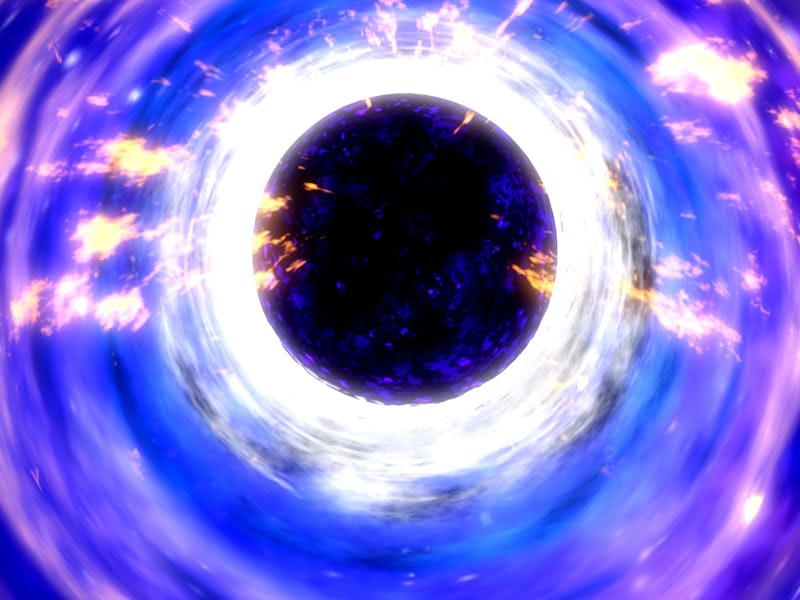Here's the New Dark Matter-Free Theory of Gravity
Erik Verlinde has picked a fight with Einstein -- and could win.

The existence of dark matter is generally accepted by the sort of scientists who care about that kind of thing. After all, it’s a pretty robust explanation for why some stars and galaxies around the universe move around and accelerate in ways that can’t be explained simply by the gravitational effects of observable objects in the vicinity. Globs of an unseen substance, making up almost 85 percent of the total mass of the universe, have long been an integral part of our modern understanding of gravity.
But not everyone is buying it. There are quite a few alternative theories to gravity that don’t involve dark matter — some wilder than others — but the latest is worth lingering on because it’s a stickier idea. University of Amsterdam theoretical physicist Erik Verlinde is claiming that gravity isn’t an interaction or force as first described by Albert Einstein. Instead of being a static property since the Big Bang, gravity has, according to Verlinde, been an emergent phenomenon, constantly growing and expanding and adhering to the rules of increasing entropy as outlined by the second law of thermodynamics.
Verlinde first explained this theory of emergent gravity in 2010 and, in his latest paper, he doubles down and insists that the distribution of gravity throughout the universe doesn’t need to be explained by dark matter and dark energy. Verlinde studied Stephen Hawking’s and Jacob Bekenstein’s framework for black hole entropy and came to the conclusion that these principles might explain an observation about the connection between the acceleration scale in galaxies and at the cosmological horizon.
“I immediately realized that this should have a connection with my ideas on emergent gravity and entropy and that this implied a relation between the observed phenomena associated to dark matter and the presence of dark energy,” he tells Inverse.
At its core, Verlinde’s theory hypothesizes that gravity is driven by the entanglement of entropy in a vacuum. “Just like the normal laws of thermodynamics can be understood from the statistical treatment of the microscopic molecules that make up matter, gravity can be derived from the microscopic ‘molecules’ that make up the space time,” he says.
Those molecules are bits of quantum information, or qubits. As qubits aggregate and move around, they become more and more entangled with one another. This disorder increases the entropy of the quantum state of spacetime.
“When one assumes that this entanglement entropy grows like the area, one can derive the Einstein equations,” says Verlinde. “My insight was that in a universe with a positive dark energy there is a contribution to the entanglement entropy that grows like the volume. This contribution changes the laws of gravity from the ones by Einstein at large scale and low acceleration and precisely gives rise to the phenomena currently contributed to dark matter.”
In other words: Gravity is the root cause and an emergent property of the universe’s expansion.
There’s reason to believe Verlinde might be on to something. His theory helps resolve some unknown questions in physics that dark matter hasn’t been able to answer yet. It helps reconcile quantum mechanics with gravity in one description, consenting the laws of thermodynamics with black holes.
That’s why there are physicists out there currently trying to run tests to see whether emergent gravity is real. Margo Brouwer at Leiden Observatory in the Netherlands and her team have worked to compare gravitational distribution predictions based on Verlinde’s theory with actual astronomy observations, and found that the data matched remarkably well with the predictions.
This is simply the first step, but it’s critical for turning Verlinde’s theory from a fringe idea into a serious field of research. A lot more work will need to be done to prove it, but if Verlinde is right, we’re not just looking for dark matter in the wrong way — we shouldn’t be looking for it at all.